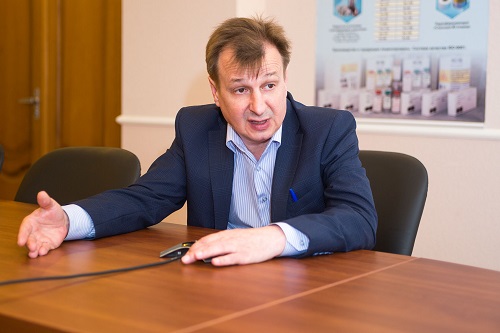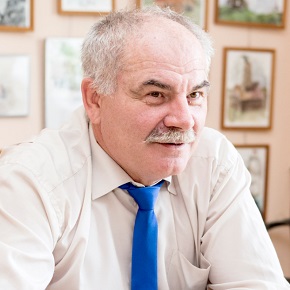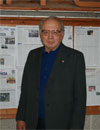 |
||
|
Dmitry Klinov: BFS is being renewed AtomInfo.Ru, PUBLISHED 07.08.2016 Dmitry Klinov, Deputy Director General - Director of the Nuclear Reactors and Fuel Cycle Division at SSC RF - IPPE, answers the interviewers' questions for the electronic edition of AtomInfo.Ru. CONTINUED BELOW Dmitry Klinov  Retrofitting and upgrading Dmitry, retrofitting and upgrading of the BFS complex is to be completed this year. When and why did the task arise? The task of the BFS retrofitting and upgrading arose in late 2010 as a consequence of the enormous difficulties that we had encountered in renewing the licence to operate our fast critical facilities. These difficulties were, in turn, caused by functional obsolescence and physical wear on both permanent and scientific equipment that provides operation of the facilities. The Federal Service for Environmental, Technological and Nuclear Supervision warned us that they will flatly refuse to renew the operating licence. There was no special-purpose funding for upgrading the BFS complex whereas the amount of work to be done was expected huge. Selection of the BFS complex for retrofitting and upgrading as part of the Federal Target Programme on new generation nuclear energy technologies proved a way out. It took a long time to write the statement of work for upgrading the fast critical facilities and to obtain official approval, but it was eventually approved in 2012 and the task was included in the Federal Target Programme. The total cost of retrofitting and upgrading the BFS complex was initially estimated at about 2 billion roubles, the estimate being made both by IPPE and Rosatom experts. It should be made clear at once that the Federal Target Programme wouldn't cover all the expenses as government money is limited. Therefore, a decision was made to reduce funding of certain works, with their scope changed as little as possible. Namely, funding of the BFS was reduced as regards scientific equipment. In the end, funding totalled 1.2 billion roubles, and in 2012 the programme for upgrading the critical facilities was launched. What was this programme finally comprised of? The approved programme of retrofitting and upgrading works at BFS was divided into two parts. For convenience, let's call them major construction work and supply of new materials. The part consisting in major construction work was delayed for different reasons and was only started in 2014 whereas the supply of new materials began in 2012 as planned. Which materials are meant? Plutonium metal, uranium mononitride, boron carbide and nuclear grade sodium. Besides, we received lead, lead-bismuth and some absorbers within other parts of the Federal Target Programme. A certain amount of plutonium was allocated from the State Reserve for the needs of the BFS retrofitting and upgrading. JSC "Siberian Chemical Complex" was contracted to produce plutonium and uranium mononitride disks. They undertook the novel task in Seversk. Though there were a lot of technical and engineering difficulties to overcome, the job is being handled well and we have every reason to believe it will be done fully. The first batches of uranium mononitride and plutonium have been delivered. In future, there will be enough materials to have both the critical facilities loaded with advanced fuel types. As regards major construction works, those concerning buildings and structures are well under way in accordance with the schedule. We are, therefore, sure of having them completed at the scheduled time. Replacement of the CPS equipment is something that stands alone. The new equipment has already been bought and delivered to IPPE. We are planning to start mounting it next month and then proceed to initial start-up and putting BFS into operation, which will make everything clear. The self-sustaining reaction emergency alarm system and the radiation monitoring system have been replaced completely. So have the radioactive drain, ventilation (including active ventilation), fire alarm systems; retrofitting of the nuclear materials storage is almost finished. Complete replacement of all the engineered safety systems has been fulfilled. I'm sure the Federal Service for Environmental, Technological and Nuclear Supervision will now approve renewal of the full-term operating licence. The BFS complex is absolutely certain to operate. What can be said about the scientific equipment? It is being purchased. Some pieces are bought at our own expense; sometimes we resort to funding from Rosatom's innovation budget. A new reactivity meter and devices for positioning small-size and large-size fission chambers will be installed. New codes for processing experimental data are being created, new techniques are being developed... All in all preparatory work is moving into high gear! When is the initial startup of the upgraded test facilities planned? In late December 2016. Interests and customers Dmitry, we have often asked about demand for BFS after the facilities resume operating. We would like to take this opportunity to ask the question again. Is there interest in performing experiments on your facilities in Russia and abroad? At present, there is hardly any alternative to the BFS complex! The ZPPR critical test facility in the USA is put in dead storage, much like FCA in Japan; the upgrading works at the MAZURCA critical test facility in France will continue until the end of 2018. For the time being we are holding a monopoly to be taken advantage of. As early as in 2013 CEA and Rosatom signed an agreement for carrying out a comprehensive experimental programme, which will be used for justification of the ASTRID project. The task calls for a progressive approach in order to obtain reliable measurements of the sodium void reactivity effect. To determine SVRE reliably is compulsory for justification of any project, including those in France. In addition, drawing on our joint experiments, French colleagues will be able to verify their codes in order to obtain a certificate from the regulatory authorities. The certificate gives the right to use the codes for designing ASTRID reactors as well as for operating them in future. Do the regulatory authorities in France recognize BFS as a verification tool? Absolutely! What other foreign customers, besides the French, are there in the offing? Koreans. A large share of our international activity relates to cooperation with South Korea, where they want to create their own counterpart of ASTRID - a fast sodium reactor either with MOX or metal fuel. We have conducted experiments our Korean partners needed for the MOX option. Now they have started to talk about experiments with metal fuel, so continuation is most likely. Does China show any interest? It does not only show but persists with their interest. In fact, we are perfectly able to do what the Chinese request. Where do things stand in terms of Russian contracts? Much depends on how the Federal Target Programme-2 will start. We are planning on a whole series of experiments for BN-1200, BREST and even MBIR, where new experimental devices will slightly modify the core. What can BFS do for the purposes of BN-1200? We can simulate the core representatively enough out full-scale simulations of the core to justify design parameters. Meanwhile, you should realise the task is not as simple as that of measuring criticality. We can simulate different timepoints of the reactor refueling cycle because we have both Pu-240 and neptunium. Reactivity effects can, thus, be simulated at different time points of the reactor refueling cycle. For CR simulations we have highly enriched boron, including boron of enrichment to 80% 10B. Besides, there is a large set of foils, samples and fission chambers for determining breeding factors, parameters of МА transmutation, spectral characteristics. In case of BREST we can offer any option you like. If, for example, the customer wants to start with uranium and change over to MNU-Pu, such simulations can be carried out - we shall manage. Plutonium and uranium mononitride are available. Moreover, full-scale mock-ups can be simulated at BFS-2 for BREST-300. Similarly, we have at our disposal everything that is necessary for MBIR, for full-scale mock-ups as well. In fact, we have already carried out MBIR simulations. However, it was done without regard to experimental devices since a decision is taken to achieve first criticality in the "clean" core at MBIR. We will help study the effect of experimental devices on reactor parameters. Can we therefore come to the conclusion that the money spent on BFS retrofitting and upgrading is going to be recovered? No doubt. The thing is, we would like not only to recover the money spent but to earn profit. When experiments are conducted for Rosatom's facilities, prices are set at next to cost value. On the other hand, IPPE has to buy new equipment, pay bonuses, invite and educate the young, etc. All that calls for funds. However, it's hard to receive funding from the state budget, so commercial activity remains the only source. By commercial activity I mean experiments for foreign customers, when we charge a price for the experiments and there are vendor-to-customer relations. If our experiments are needed, they can be ordered. While others shut down their research test facilities on the pretext that they are expensive and redundant, we were keeping the BFS complex, including both scientific and operating personnel. Today, we are taking full advantage of having a monopoly. Getting back to your question - yes, such a complex of critical facilities as BFS justifies its existence completely and investments in its retrofitting and upgrading are certain to be recouped. Thank you, Dmitry, for giving the interview to the electronic edition of AtomInfo.Ru. Note The BFS critical facilities are multi-purpose constructions that allow mounting critical assemblies from disks which have the same outer diameter but differ in composition and height as well as performing a large set of neutronics parameter experiments. Power capability is sufficient for implementing a massive experimental programme whereas residual activity of nuclear materials does not normally limit the speed of reassemblies which are necessary for remodelling a mock-up. Available materials make it possible to simulate reactor mock-ups with different layouts of the cores, blankets, CPS rods, coolants. There are also materials for moderator simulations as well as various inert materials. Topics: Fast breeders, Interview Other news: 443 nuclear units are operating in the world Another 65 units have the status of the being built one. New American submarine will be named after admiral Rickover 60th anniversary of the first trip of the nuclear submarine Nautilus. Westinghouse will deliver CE16NGF fuel on Palo Verde This is a new generation fuel for 16×16 grid. |
Hero of the day 
Oleg Grudzevich: do-all accelerator It has simple and well-considered control. Do you need to connect a gas system? Welcome, one click of the PC mouse is enough to preset the pressure. Is the beam cut off? Five seconds and the doors are unlocked. Actually, no problems are expected. INTERVIEW
Lev Kochetkov OPINION
Rudolf Baklushin |

